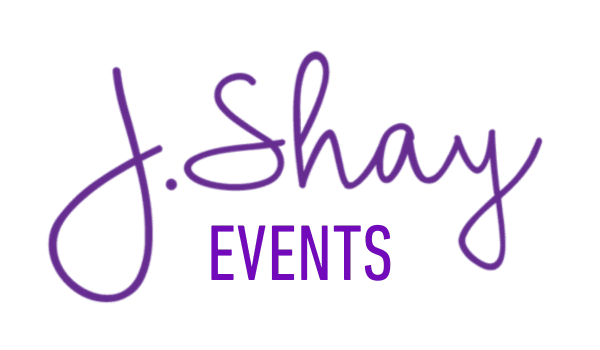User conferences are more than just industry gatherings. They’re a powerful way to engage, educate, and excite your customers while strengthening your brand’s presence. From customer retention to enhanced brand loyalty, the potential benefits of a well-planned user conference are immense.
Whether you’re hosting your first conference or are looking to elevate your current strategy, this article will guide you through each step of the planning process, ensuring your event leaves a lasting impression on your attendees.
What is a User Conference and Why Does It Matter?
A user conference is a company-hosted event designed to bring together customers, partners, and industry stakeholders. It serves as a platform to strengthen relationships, share knowledge, showcase products, and build a sense of community.
User conferences allow companies to engage customers face-to-face, gain valuable feedback, and spark collaboration. They also give businesses the opportunity to showcase new products or services and educate attendees on best practices.
Done right, a user conference goes beyond traditional marketing to create deep, meaningful connections with your audience, offering an experience that builds customer loyalty and reinforces brand identity.

Why Host a User Conference?
Strengthen Customer Relationships
Face-to-face interactions foster stronger connections than any email or ad campaign could achieve. Customer conferences create a space for open, meaningful dialogue between your team and your users. Building rapport this way enhances trust and loyalty.
Gain Valuable Feedback
Your customers are a goldmine of insights. Whether it’s product feedback, feature requests, or challenges they face, a conference enables you to hear firsthand how your product or service impacts them. This feedback, as highlighted by Shiloh Events, can guide your product roadmap and strategy.
Build Brand Loyalty
When customers feel personally connected to your company, they’re more likely to remain loyal. Events like user conferences showcase not just your product but the people and culture behind it, fostering a stronger emotional connection.
Showcase Products and Educate
User conferences are the perfect opportunity to display your latest products, unveil roadmaps, or train customers on getting the most out of your offerings. By educating your users, you not only increase product adoption but also empower them to succeed—creating happier, long-term customers.
Increase Customer Engagement
According to Brass Animals, hosting interactive sessions such as workshops or Q&As fosters a sense of involvement, making attendees feel like active contributors to your brand’s story. Engaged customers are more likely to advocate for your brand, too.
Setting Objectives and Defining Your Audience
Start with Clear Objectives
The foundation of any successful user conference is clear, measurable goals. Are you looking to boost customer retention, increase product adoption, or gain insights for your product roadmap? Defining specific objectives, as noted by Shiloh Events, ensures your strategies remain focused throughout the planning process.
Identify Your Target Audience
Not all attendees are the same. Understanding your audience will help you cater the event to their needs. Create user personas, considering demographics, job roles, and goals. Tailoring your sessions and materials to these personas ensures attendees feel seen and valued.
Budget and Venue Selection
Create a Comprehensive Budget
List all anticipated expenses, including venue rental, catering, marketing, and speaker fees. Ensure your budget aligns with your objectives. According to Shiloh Events, setting a clear budget helps you allocate resources efficiently without compromising quality.
Choose the Right Venue
Location matters. Your venue should be easily accessible, and large enough for sessions, networking, and activities. For more economical options, Mainsail Partners suggests looking into conference-friendly hotels or co-working spaces. Don’t forget to evaluate tech capabilities—like Wi-Fi and audiovisual equipment—that ensure a smooth event experience.
Virtual vs. Physical Events
Deciding whether to host a physical or virtual event depends on your goals and audience.
- Virtual Advantages: Lower costs, wider reach (ideal for multinational customers).
- Physical Advantages: Enhanced intimacy, stronger engagement, and better networking opportunities.
Crafting the Agenda
Design a Well-Structured Agenda
Your agenda is the backbone of your event. Aim for a balance between informative, interactive, and fun activities. While keynotes and breakout sessions remain staples, forward-thinking agendas include workshops, networking time, and hands-on activities that keep attendees engaged.
Incorporate Knowledgeable Speakers and Interactive Sessions
According to Brass Animals, featuring industry experts and relatable case studies adds depth to your event. Follow up keynotes with interactive sessions like live demos or discussion panels to ensure a two-way dialogue with participants.
Promote Knowledge Sharing
Include opportunities for customer-led discussions and feedback sessions. This not only encourages collaboration but also leaves attendees feeling like valued contributors.
Event Technology
From touchless check-in solutions to event-specific apps, technology can elevate your user conference. Shiloh Events suggests solutions such as branded event apps for personalized schedules and interactive polls to enhance attendee engagement. Virtual platforms like Hopin can also expand your conference’s reach.
Promoting the Event
Even the most well-planned conference will fall flat without attendees. Mainsail Partners recommends creating buzz early with a mixture of marketing tactics:
- Social Media: Share teaser posts, short video promotions, and testimonials from previous attendees.
- Email Campaigns: Send engaging invites highlighting event benefits.
- Event Website: Build a dedicated landing page with easy registration tools.
Drive excitement by emphasizing what makes your conference a must-attend. Exclusive product previews, top-tier speakers, or a sneak peek at your agenda can seal the deal.
Turning Attendees into Advocates
Beyond strengthening relationships and showcasing your brand, the true success of a user conference lies in creating advocates. Those who’ve had amazing experiences are more likely to talk about your brand, fueling organic word-of-mouth marketing and ensuring your next conference attracts even more attention.
User Conferences Are a Marketing Powerhouse
When strategically executed, a user conference becomes much more than an event—it’s a marketing campaign that aligns with your goals, builds loyalty, and deepens connections. By following these steps, you ensure your user conference not only impresses your audience but also delivers meaningful outcomes.
You might also like…
Top 10 U.S. Meeting Destinations for 2026
Successful corporate events don’t just happen — they’re built on smart decisions, starting with...
The Trade Show Prep Guide: Boost ROI Like a Pro
Trade shows are a powerful way to elevate your brand's visibility, connect with potential...
President’s Club 2026 Ultimate Gift Guide
Luxury, Personalization, and Impact for Unforgettable Incentive Travel President’s Club isn’t just...




